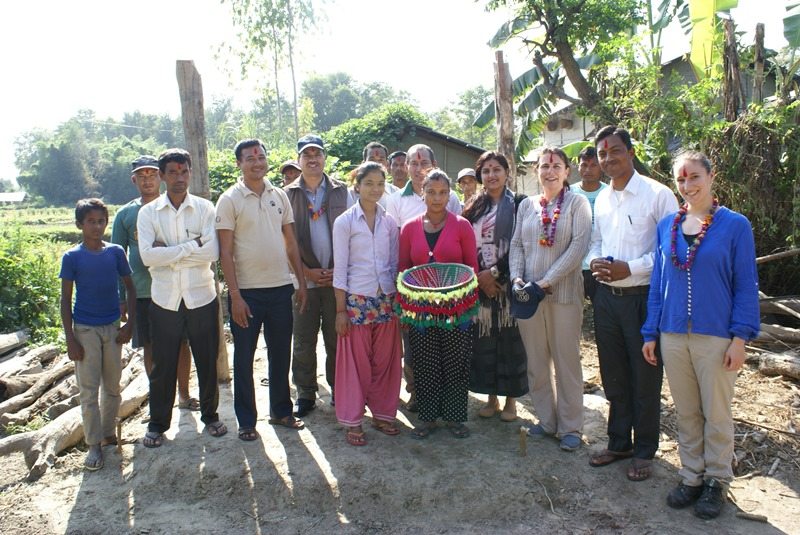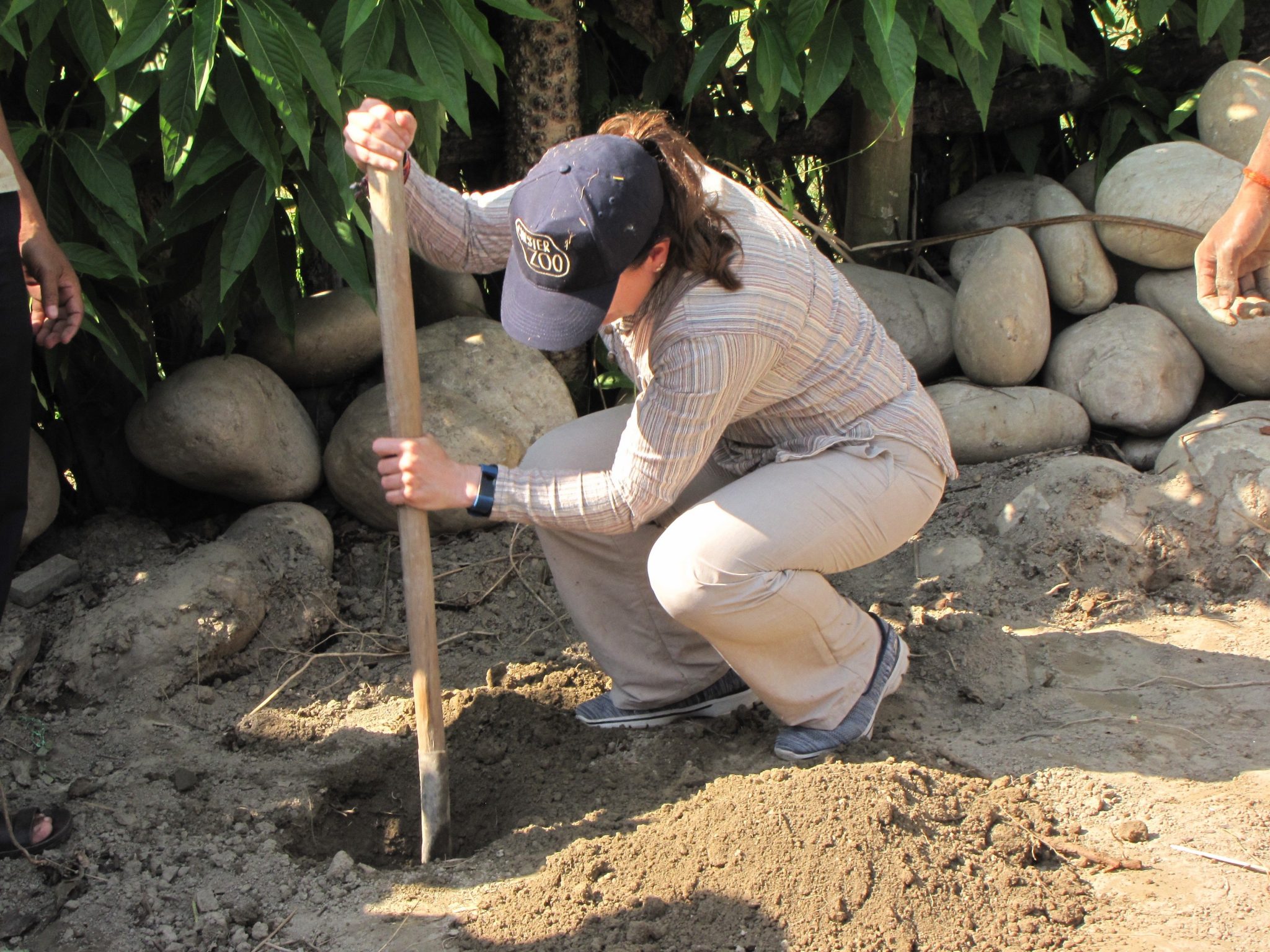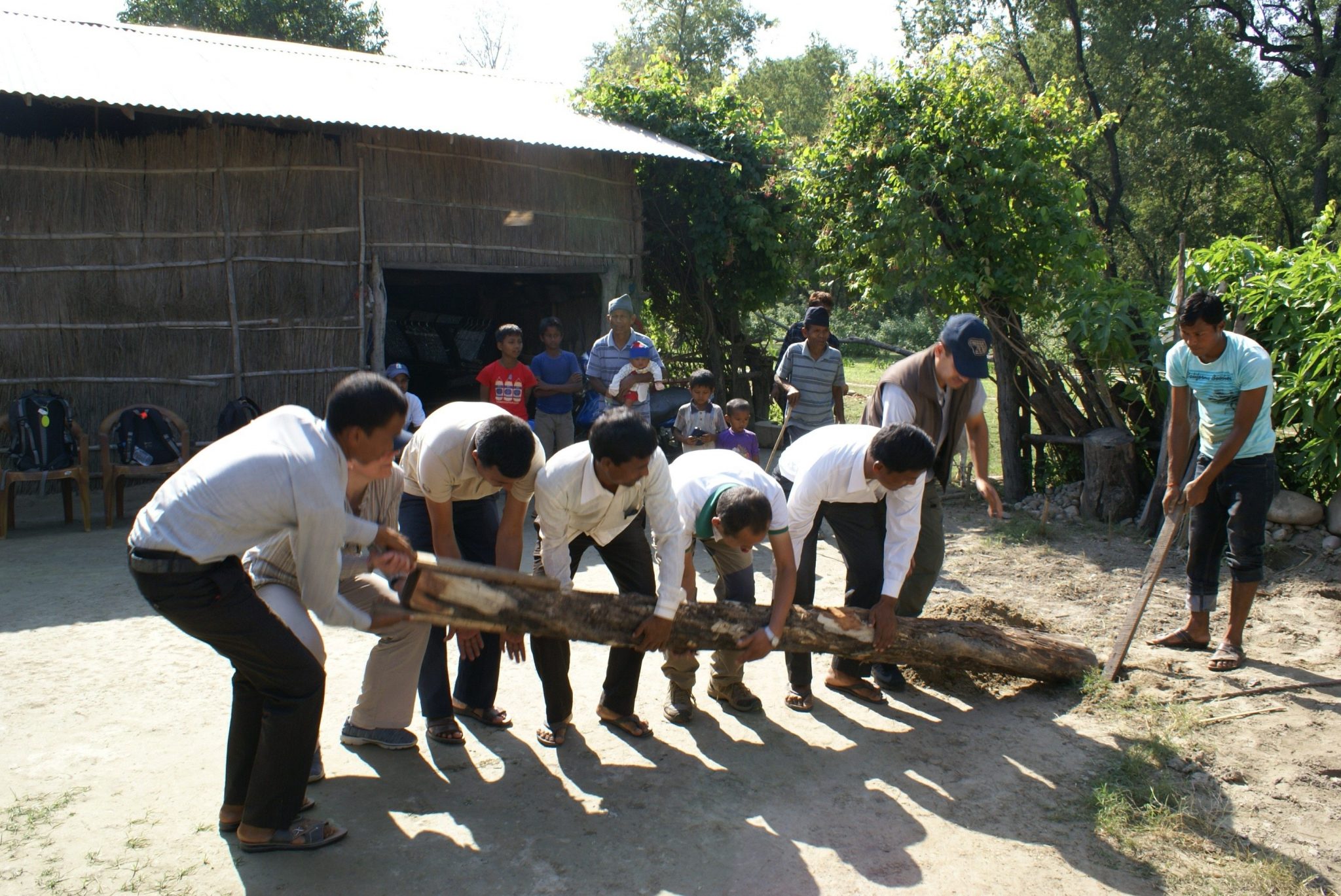In the last 20 years the population in the Terai, Nepal, has increased by 81% to over seven million people. This has led to habitat loss and fragmentation, but despite this the area is viewed as one of the worlds’ best remaining tiger habitats. Chitwan National Park and Bardia National Park are home to Nepal’s two largest tiger populations – it is estimated that there are around 120 in Chitwan and 50 in Bardia.
We’re working with the communities affected by tiger presence; the villages located around the edges of these two National Parks. The livelihoods of these villagers are closely linked to forests with the majority depending on its natural resources for income. People have to enter the forests to collect resources or graze their livestock and by doing so are at risk from tiger attacks.

Last year the Chester Zoo team went to Nepal to meet our local partner, Green Governance Nepal, and the field teams working in Chitwan and Bardia National Parks; the two study areas for the Living with Tigers project. During this visit the activities included inaugurating the Bardia Field Office, conducting community focus groups on sustainable livelihoods, assessing the skills training local communities needed and meeting our other project partners: the Department of National Parks and Wildlife Conservation, the National Trust for Nature Conservation and the Swarnim Academy of Community Development.
Throughout August and September last year, the Bardia and Chitwan field teams successfully conducted the sociological side of our research; with a total of 882 questionnaires filled by local households. These questionnaires were designed to help us understand the impact that tiger and leopard conflict has on local communities living in our study areas.

In October 2016, the Living with Tigers team started implementing some mitigation interventions to reduce specific conflicts. The interventions were developed in partnership with the communities to make sure they were tailored to the specific needs of each of them. For example, predator-proof pens were built for households that own goats (and/or sheep) and requested this type of intervention.
During our visit, one villager told us that he had lost two of his goats recently, killed by a leopard only two weeks before we came! While there, the team helped build some predator-proof pens and had the privilege of being honoured by the community.

Another important component of the project is to facilitate lasting adoption of new behaviours, using social marketing, to bring about positive change in the local communities we work with. Working with social marketing expert, Dr Diogo Verissimo, we organised a workshop for the Living with Tigers team focusing on how to use social marketing techniques to identify current behaviours most pertinent to human wildlife conflict. The questionnaires completed last year by local communities will help us get a better idea of the factors driving their natural resource use behaviours and will highlight which behaviours are putting these local villagers most at risk of human-felid conflict.
The project is funded by the Darwin Initiative and in partnership with the University of Oxford’s famous Wildlife Conservation Research Unit (WildCRU).
Keep an eye on our blog for more updates from the Living with Tigers team.
